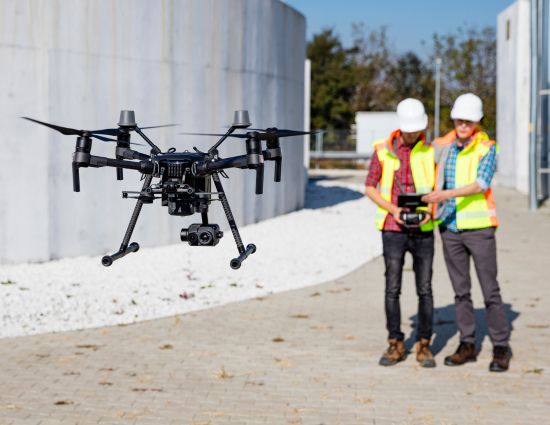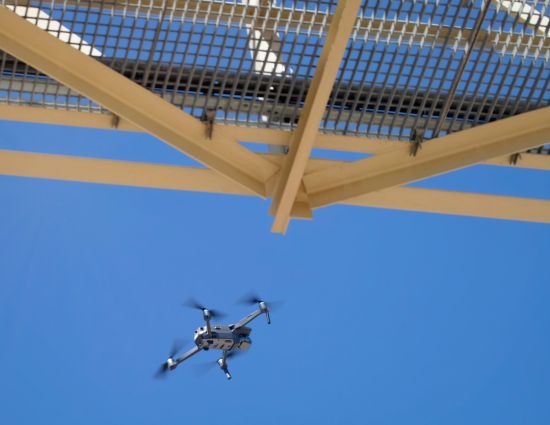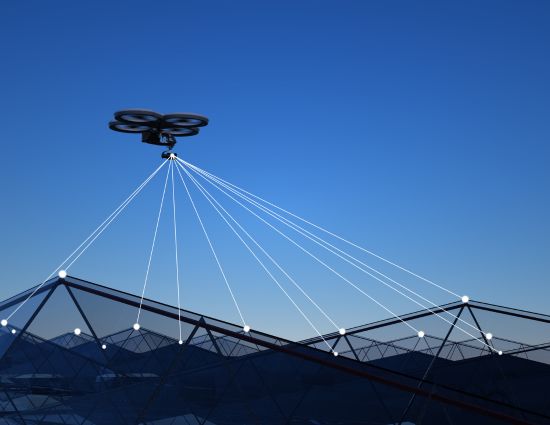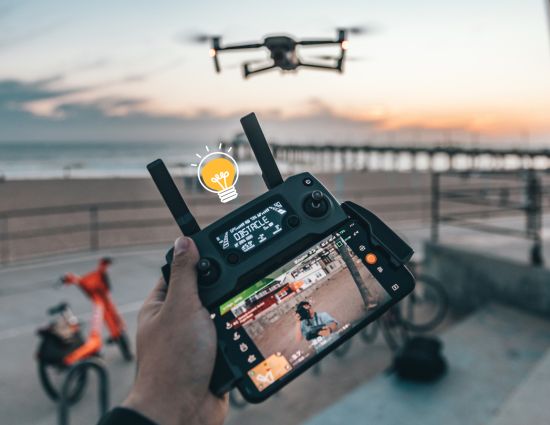Revolutionizing Power Line Inspection and Survey with Advanced Drone Technology
Experience a transformative approach to power line maintenance and monitoring through state-of-the-art drone solutions.

Drone's Assistance in Power Line Inspection and Survey
Aerial Inspections
Drones inspect power infrastructure, detecting corrosion, damage, and wear visually.
Vegetation Monitoring
Sensors on drones monitor power line vegetation for proactive safety.
Thermal Imaging
Thermal cameras on drones find power line issues, preventing critical failures.
Infrastructure Mapping
Drones enhance power line planning with accurate 3D maps for maintenance.
Revolutionizing the Indian Power Line Industry: The Vital Role of Drone Deployment
Over the years, the Indian power line industry has experienced substantial growth, keeping pace with the nation’s expanding energy needs. With the increasing complexity and vast geographical spread of power infrastructures, the deployment of drones has emerged as a game-changer. Drones bring efficiency to routine inspections and surveys, offering a bird’s-eye view of power lines and infrastructure. This aerial perspective not only accelerates the inspection process but also enhances the accuracy of identifying potential issues. As India continues to evolve its power grid, the strategic use of drones proves instrumental in ensuring the reliability and sustainability of the nation’s power supply
Drones Revolutionizing Power Line Efficiency

Automated Inspection and Maintenance
In the realm of power line inspection and maintenance, drones with cutting-edge sensors and imaging technologies usher in a new era of automation. These unmanned aerial vehicles leverage advanced artificial intelligence (AI) and machine learning algorithms to conduct autonomous analyses of captured data. By identifying potential issues such as corrosion, wear, or damaged components, drones play a pivotal role in streamlining the inspection process. The integration of automation reduces the need for extensive human intervention, paving the way for proactive maintenance planning based on precise and timely data insights. This transformative approach not only enhances the efficiency of power line operations but also contributes to the overall reliability and sustainability of the infrastructure.
Predictive Analytics for Asset Management
Drones play a pivotal role in advancing predictive analytics within power line asset management. Through continuous monitoring of power line components, drones collect comprehensive data on structural integrity, environmental conditions, and equipment performance. This data forms the foundation for the development of sophisticated predictive models, enabling utilities to anticipate potential failures. The implementation of these predictive models optimizes maintenance schedules, strategically extends the lifespan of critical assets, and enhances overall operational efficiency. This proactive approach not only minimizes unplanned downtime but also significantly reduces the necessity for emergency repairs, resulting in substantial cost savings for power utilities.


LiDAR Technology for Accurate Mapping
Light Detection and Ranging (LiDAR) technology, seamlessly integrated into drones, empowers highly precise mapping of power line corridors and the adjacent terrain. Drones equipped with LiDAR sensors generate detailed 3D maps, capturing topographical and elevation variations with unparalleled accuracy. This rich dataset proves invaluable for assessing the condition of power line infrastructure, optimizing vegetation management, and pinpointing potential clearance issues. The utilization of LiDAR not only enhances mapping accuracy but also supports informed decision-making in power line planning and maintenance. This advanced technology underscores its significance in ensuring the reliability and efficiency of power transmission networks.

LiDAR technology provides highly accurate 3D maps, enabling detailed assessments of power line corridors. This precision aids in identifying structural issues, optimizing vegetation management, and ensuring clearance compliance.
Drones enhance safety by reducing the need for manual climbing of utility poles, minimizing risks associated with traditional inspection method
Drones equipped with high-quality cameras and sensors provide detailed images, enabling inspectors to closely examine power line components and identify defects with precision.
Yes, drones provide remote accessibility to difficult or hazardous areas, such as remote locations or mountainous terrain, ensuring a comprehensive inspection of the entire power line network.
